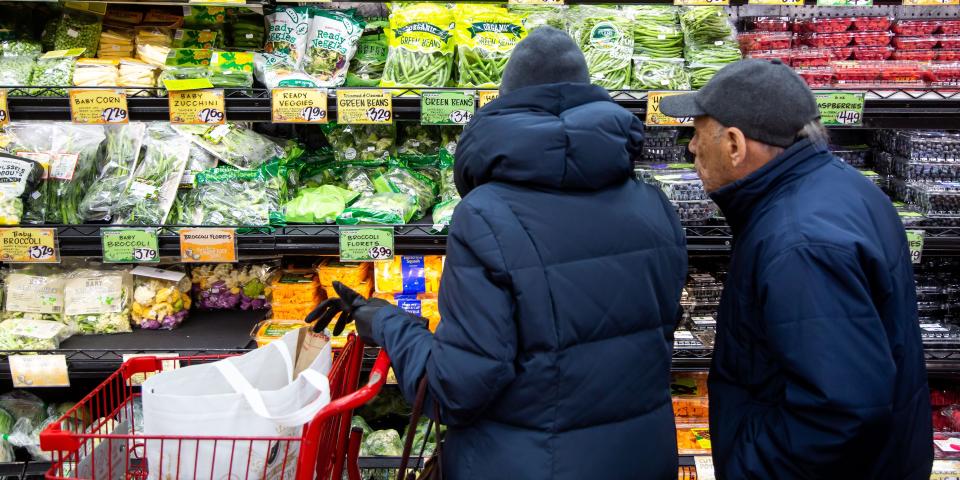
-
The cost of living, eating and driving is going up, leaving consumers with nothing but empty wallets.
-
Americans can’t get a break financially, largely thanks to higher interest rates and “greedflation.”
-
Here’s all the ways consumers are getting screwed and why.
The US economy may be in good shape, but Americans are getting squeezed from all sides.
Mortgage rates have skyrocketed to 23-year highs, along with surging food, fuel and new car prices. On top of that, it’s become more expensive to pay back debt in a world of higher interest rates.
The Federal Reserve has hiked interest rates from near-zero levels to upwards of 5% in a bid to cool 40-year high inflation raging through the US economy last year. While its fight against consumer price pressures has proven rewarding, with inflation rising by 3% annually, it still remains above the Fed’s 2% target, paving the way for more interest rate hikes.
But surging borrowing costs aren’t solely driving up costs for consumers. Supply shortages from extreme weather conditions and strategic oil production cuts have also boosted food and gas prices.
Here’s all the ways US consumers are getting squeezed and why.
US mortgage rate are at 23-year highs
Higher interest rates influence mortgage rates. As the Fed continues to steepen borrowing costs, it’s meant owning a property has become less affordable.
US 30-year mortgage rates surged to a 23-year high in recent days, Freddie Mac data shows. As of August 3, the average 30-year fixed mortgage rose to 6.9%.
“The combination of upbeat economic data and the U.S. government credit rating downgrade caused mortgage rates to rise this week,” Freddie Mac said. A surprise rating cut by Fitch last week saw a jump in bond yields.
Mortgage rates tend to fluctuate with 10-year Treasury yields, given lenders typically tie rates to the yield of the 10-year bond.
Not only are elevated mortgage rates squeezing homeowners, but also homebuyers. Higher borrowing costs have limited the amount of homeowners looking to sell, given they feel like they’re locked into their current low-mortgage rate. That’s squeezed the supply of homes available for sale on the market, driving up prices for those looking to buy a property for the first time.
Gas prices U-turn
In recent months, drivers have enjoyed the lowest gas prices since the Ukraine war broke out. But now, those costs have taken a U-turn.
The average gallon of gas traded at $3.83, its highest level since October 2022, per AAA.
It’s largely because of “greedflation,” as oil suppliers including Saudi Arabia and Russia cut production in a bid to lift crude prices. Both benchmark Brent crude and West Texas Intermediate are currently trading upwards of $80 a barrel.
It’s threatened to worsen the inflation problem in the US that the Fed has worked so hard to kill in what would be another blow to consumers’ wallets.
Foodflation
From a glass of orange juice to a piece of chocolate, buying groceries is also hurting consumers.
Just after a spike in orange juice prices, cocoa costs surged to a multi-year high – both surges coming on the back of crop diseases and extreme weather conditions.
Rice, sugar, soybeans and wheat have also jumped in price, markets guru Larry McDonald pointed out in a post on X.
“Greedflation” has also been part of the problem too, Nobel economist Paul Krugman said, with businesses hiking prices in an effort to reel in higher profits during times of high inflation.
Credit card debt
Just when you thought consumers are getting squeezed enough, there comes credit card debt.
Consumer credit card debt ballooned to a record $1.03 trillion in the second-quarter. It comes at an unfortunate time for Americans who are grappling with sky-high interest rates, which are set to get even steeper in coming months. That’s made the cost of servicing debts more expensive.
On top of that, the resumption of student-debt loans in October stands to make matters worse for the average consumer.
Overall, it forces one question. When, if ever, will consumers get a break?
Read the original article on Business Insider


